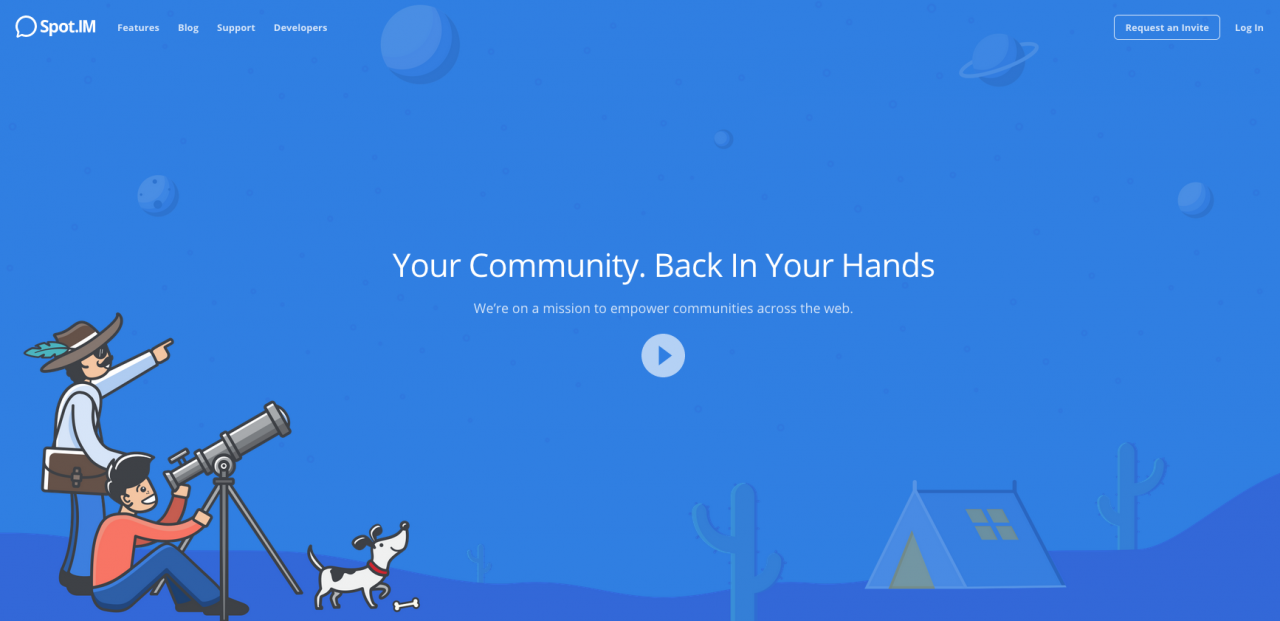Spot.IM is best known for helping publishers streamline and spam-proof their comments sections. But on the heels of a $13 million Series A funding round announced last month, the four-year-old company is looking to expand its role in the digital publishing world.
“Our goal is not just to build comments for publishers, it’s to build a community,” Spot.IM co-founder and CEO Nadav Shoval said. “Our goal is to turn any website into an engaged community.”
By strengthening Spot.IM’s social networking features, Shoval and Ishay Green, co-founder and CTO, want to help publishers take back their audience engagement (and digital ad revenue) from platforms like Facebook and Twitter, which currently boast better networking tools, more appealing interfaces, and faster download speeds than what most digital publishers can achieve on their own. That’s where Spot.IM comes in.
“We are the programmers of the web,” Green said. “If you’re outside of Facebook and you don’t have 4000 developers and machine learning, Spot.IM is going to program the solutions for you.”
Spot.IM is Still Primarily a Comments Platform — For Now
Even with the injection of $13 million, Spot.IM faces a steep road to catch up with the Facebooks and Twitters of the world (Facebook, by comparison, earned about $68 million per day in 2016’s second quarter, and with that kind of money, it can afford to buy some serious talent).
It must also be noted that Spot.IM is a long way from achieving the look and feel of a true social network. On websites like Advertising Age and RT.com, Spot.IM still functions pretty traditionally as a comments platform — albeit one that allows users to view recent comments in personalized newsfeeds, post comments in real time (and see when other users are typing), and, in some cases, rate comments on a five-star scale.

A screenshot from the Spot.IM-powered newsfeed on RT.com.
These features aren’t trivial, of course. At a moment when many publishers are choosing to ditch comments altogether, Spot.IM is trying to make the comments section feel less like a shadowy, troll-ridden corner of the internet and more like a space for meaningful audience engagement. “I think publishers experienced trauma from all the horrible comments sections full of spam in the ’90s,” Shoval said. “They didn’t have good execution.”
Spot.IM’s automatic moderation feature and suite of social engagement tools make it an upgrade over many of its competitors’ platforms. But to achieve Shoval’s and Green’s vision for “deep engagement,” Spot.IM will likely need to look beyond the comments section — a pivot that already appears to be underway. The company recently launched a live blogging tool, for example, and Shoval says more innovations are in the works. “Everything you can imagine that a social network should have,” he said, “we’re going to provide publishers for free.”
Ad Blockers Pose a Threat to Spot.IM’s ‘Partnership’ Model
It’s becoming a Silicon Valley cliche for companies to market themselves as partners, not vendors, to their respective clients. But Spot.IM, which offers its technology to publishers for free and uses a Slack channel to keep its developers in close contact with the platform’s end users, is one company that might actually fit the billing.
“We really care about the publishing industry, and we really care about publishers,” Shoval said. “This is why we don’t charge money, and this is why we give them the data, and this is why we always try to listen and develop new products.”
In order to offer its tools to publishers for free, Spot.IM has chosen to monetize its technology through “community ad messaging,” an incremental revenue scheme in which publishers and Spot.IM split the ad revenue generated via Spot.IM’s network of advertisers. This approach jives with Spot.IM’s “partnership” philosophy, but it also makes the company equally vulnerable to ad blockers, which are now being used by nearly 70 million (and counting) American consumers.
Asked whether Spot.IM was working on a fix to the ad blocker problem, Shoval replied: “Yes, but unfortunately I cannot elaborate on it right now… Let’s just say we are always listening to our partners and are always looking for innovative ways to help them.”
Ben DeJarnette is the associate editor at MediaShift. He is also a freelance contributor for Pacific Standard, InvestigateWest, Men’s Journal, Runner’s World, Oregon Quarterly and others. He’s on Twitter @BenDJduck.

